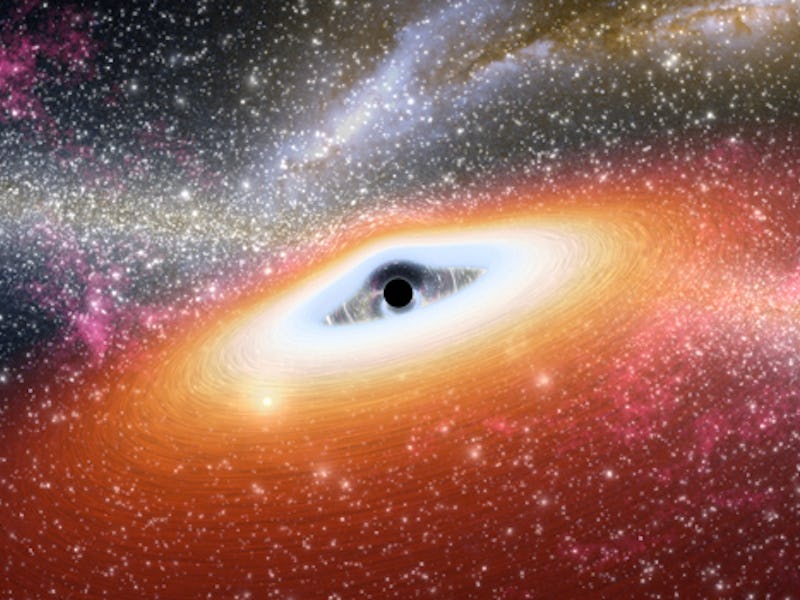Theory: Black holes may not be as inhospitable as we think
This could open up a whole new world -- or worlds -- in astronomy.

When it comes to finding new and unusual worlds, astronomers have searched far and wide for exoplanets around host stars far from our own.
But stars might not be the only cosmic bodies capable of holding planets in a swirling orbit — one of the least-hospitable objects in the cosmos may be able to do it, too. In a new theory, scientists suggest that supermassive blackholes could have thousands of planets orbiting them. If the hypothesis is borne out with further research, the idea would upend the common assumption that nothing can exist near a black hole — never mind interact with it as the Earth does the Sun.
“With the right conditions, planets could be formed even in harsh environments, such as around a black hole,” Keiichi Wada, a researcher at the National Astronomical Observatory of Japan and co-author of the study, said in a statement.
To test the theory, the scientists created a simulation of an Earth-sized planet forming around 10 light-years away from a blackhole.
They published their findings in the Astrophysical Journal this week.
If stars can do it, why can’t black holes?
Theories of planet formation suggest that planets form from the chaos of the disc of swirling gas and dust around a young star. Black holes have similar discs — suggesting they too may have the right ingredients needed for planets to form.
Supermassive black holes are formed in the center of galaxies — there is one at the center of our own Milky Way. They feed off of large amounts of gas and dust attracted towards them by their gravitational pull. This cloud of gas and dust can grow so huge that it can equal a hundred thousand times the mass of the Sun — which is more than enough material to form a planet, or even thousands of them.
“Around black holes there might exist planetary systems of astonishing scale,” Eiichiro Kokubo, a professor at the National Astronomical Observatory of Japan, and co-author of the study, said in a statement. “Our calculations show that tens of thousands of planets with 10 times the mass of the Earth could be formed around 10 light-years from a black hole.”
There is no way for astronomers to be able to detect such planets orbiting around a black hole. All exoplanets discovered so far orbit bright stars — scientists spot them by observing a slight dip in the star’s light as the planet transits in front of it.
Because that depends on light — something black holes are in short supply of — it isn’t clear how astronomers would detect planets around a supermassive black hole. But the results do suggest that it may be worth looking — you never know what you might find in the dark.